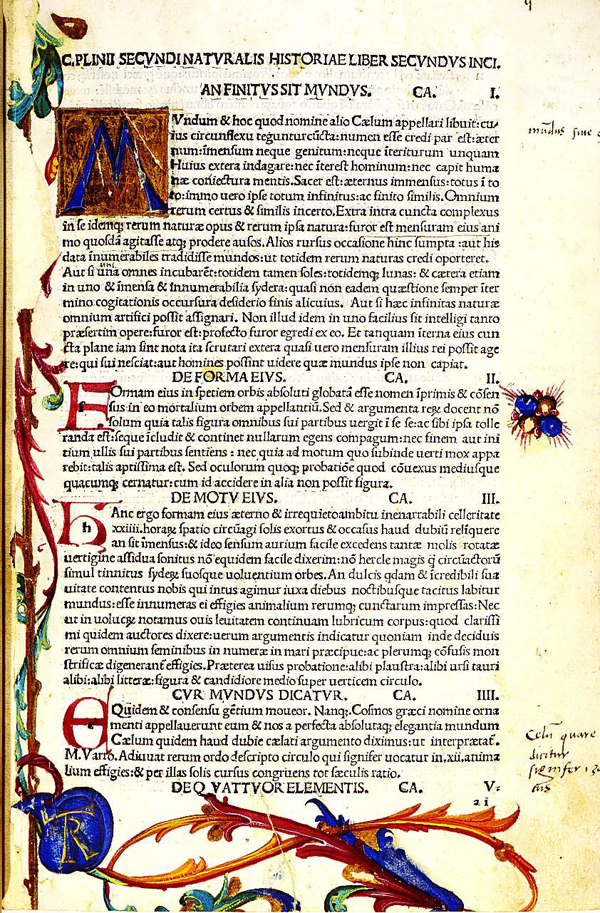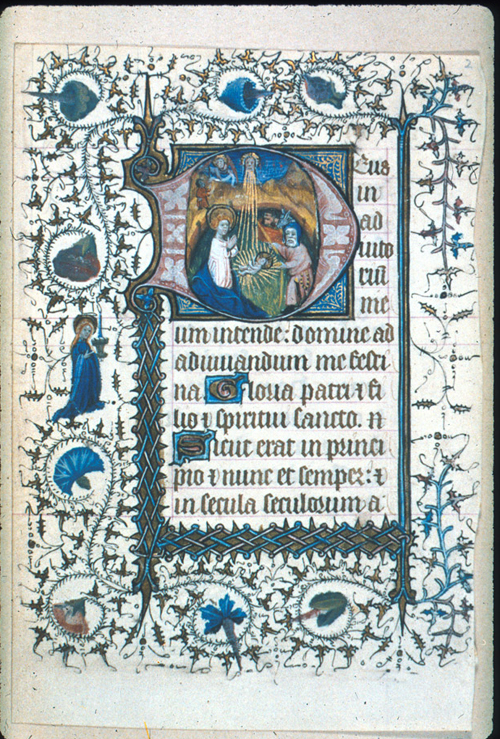15th century
With the invention of the printing press, the herbals of classical scholars were mass-produced and made accessible to all educated people who could afford it.

Illuminated text page
from Gaius Pliny the Elder (23-79 AD.)
[Historia naturalis]
Printed, 1483
from Gaius Pliny the Elder (23-79 AD.)
[Historia naturalis]
Printed, 1483
The first plant books brought to print the great classical authorities, such as Pliny the Elder and Dioscorides.
Pliny the Elder wrote the oldest encyclopedia, a natural history in 37 books of which 16 discuss botany, agriculture, and horticulture. The text is based on his survey of 2,000 earlier volumes and a lifetime of personal observation. It is the principal document of Roman knowledge about plants.
Pliny the Elder wrote the oldest encyclopedia, a natural history in 37 books of which 16 discuss botany, agriculture, and horticulture. The text is based on his survey of 2,000 earlier volumes and a lifetime of personal observation. It is the principal document of Roman knowledge about plants.
During the Middle Ages botanical motifs were incorporated into many works of art, from details in paintings to prayer books.

Book of Hours of the use of Rome. 1488


Book of Hours. Holland. 1420
Book of Hours. France. 1470

Konrad von Megenberg. Book of Nature. Printed in 1475.
Other early printed works, such as Megenberg’s Book of Nature contained crude illustrations that were copies of copies and often showed little resemblance to the plants they were supposed to represent. But these woodcuts were the first printed depictions of plants presented for botanical rather than decorative purposes.